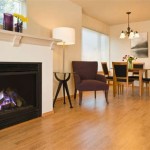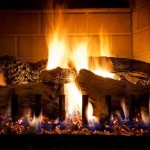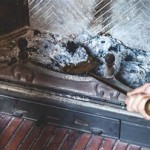The Enigmatic Allure of Trap Doors in Fireplaces
The concept of a trap door concealed within or adjacent to a fireplace evokes a sense of mystery and intrigue. These hidden access points, often associated with historical espionage, secret passages, and hidden treasures, represent a combination of practical utility and architectural ingenuity. While their presence in modern homes may be infrequent, the idea of a fireplace concealing a concealed space continues to capture the imagination. This article will explore the history, potential purposes, construction considerations, and security aspects associated with trap doors in fireplaces.
Historically, the inclusion of trap doors in fireplace designs served various purposes, ranging from escape routes during times of political turmoil to discreet storage for valuables. In castles and grand estates, secret passages connected to fireplaces allowed occupants to evade capture or move unseen throughout the property. During periods of persecution or war, these hidden routes provided crucial means of survival. Furthermore, fireplaces, due to their substantial size and inherent structural integration within a building, offered an effective means of concealing access points that would otherwise be readily apparent.
Beyond their practical applications, trap doors in fireplaces also contributed to the atmosphere of secrecy and intrigue that surrounded certain historical figures and locations. The existence of such hidden spaces fueled legends and myths, further enhancing the mystique of estates and castles known for their secret passages. The romanticized notion of a hidden escape route activated by a cleverly disguised mechanism near the fireplace continues to resonate in popular culture, contributing to the enduring fascination with this architectural feature.
Historical Context and Practical Applications
The prevalence of trap doors in fireplaces can be largely attributed to historical necessity and the architectural conventions of past eras. The construction of castles, manors, and other fortified structures often prioritized security and defense, leading to the incorporation of various defensive measures, including concealed passages and escape routes. Fireplaces, as integral structural components, provided opportune locations for concealing these access points.
Specific historical applications varied depending on the location, political climate, and the needs of the occupants. In some cases, trap doors led to entirely separate rooms specifically designed for hiding individuals or storing valuable items. These hidden rooms often contained basic necessities such as food, water, and bedding, enabling occupants to weather sieges or other emergencies. In other instances, the trap door might lead to a network of underground tunnels providing access to other parts of the property, or even beyond its boundaries. The specifics of these designs were often tailored to the unique circumstances of each building and its inhabitants.
Furthermore, the placement and operation of these trap doors were frequently concealed through elaborate mechanisms or disguises. Levers hidden behind decorative carvings, panels that could be swung open by pressing on a specific point, or even false fireplace hearths that could be lifted to reveal the passage below were all employed to maintain secrecy. The sophistication of these mechanisms often reflected the importance placed on maintaining the integrity of the hidden access point.
Construction and Design Considerations
The construction of a trap door in a fireplace, whether implemented historically or in a modern context, necessitates careful planning and execution. The structural integrity of the fireplace and the surrounding walls must be maintained, and the design of the trap door itself must be both functional and aesthetically appropriate. Considerations include the materials used, the mechanism for opening and closing the door, and the concealment of the access point.
Traditional construction often involved the use of stone, brick, or timber to match the existing fireplace. The trap door itself would be carefully fitted into the fireplace structure, often incorporating a hinge or pivot system to allow for smooth operation. Concealment was achieved through various techniques, such as matching the surface of the door to the surrounding brickwork or stonework, or using decorative elements to disguise the presence of the hinge or opening mechanism.
Modern construction techniques offer a wider range of options. Lightweight materials such as engineered wood or composite materials can be used to reduce the weight of the trap door, making it easier to operate. Sophisticated hinge systems and locking mechanisms can be incorporated to enhance security and prevent unauthorized access. Furthermore, modern fabrication techniques allow for precise matching of the trap door's surface to the surrounding fireplace, ensuring a seamless and undetectable integration.
Crucially, any modifications to a fireplace, particularly those involving structural alterations, should be undertaken by qualified professionals. A structural engineer can assess the integrity of the fireplace and the surrounding walls, and a qualified contractor can ensure that the trap door is installed correctly and safely. Failure to properly assess and address these structural considerations could compromise the stability of the fireplace and pose a safety hazard.
Security and Modern Implementations
In a contemporary setting, the inclusion of a trap door in a fireplace is more likely to be motivated by design aesthetics, a desire for unique architectural features, or the creation of hidden storage rather than the need for clandestine escape routes. However, the security aspects of such a feature remain relevant, particularly if the hidden space is intended for storing valuables or sensitive information.
Modern trap door designs often incorporate enhanced security measures. These may include hidden locking mechanisms, biometric access controls, or even surveillance systems. The level of security implemented will depend on the intended purpose of the hidden space and the perceived risk of unauthorized access. For example, a trap door leading to a wine cellar may require only a simple locking mechanism, while a trap door concealing a safe or a panic room may necessitate more sophisticated security features.
The rise of smart home technology has also opened up new possibilities for controlling and monitoring trap doors. Electronic locks can be integrated with home automation systems, allowing for remote locking and unlocking via smartphone or other devices. Sensors can be installed to detect unauthorized access, and cameras can be used to monitor the hidden space for suspicious activity. These technological advancements provide homeowners with greater control over the security of their hidden spaces and offer added peace of mind.
Furthermore, the integration of a trap door into a fireplace can serve as a deterrent to potential intruders. The very presence of a hidden space suggests that valuables or sensitive information may be stored within, potentially discouraging unauthorized individuals from attempting to gain access to the property. The psychological impact of a hidden space should not be overlooked as a component of overall security.
Ultimately, the decision to include a trap door in a fireplace is a matter of personal preference and individual needs. While the historical context and practical applications of such a feature may have evolved, the underlying appeal of a hidden space continues to resonate. By carefully considering the construction, design, and security aspects, homeowners can create a unique and intriguing architectural feature that adds both value and character to their property.

Fireplace Ash Dump Service Full Chimney

Fire Box Grate Ash Dump Doors Clean Out Dr Sweep

Plywood Support For Fireplace Interior Inspections Internachi Forum

Cellar By The Fireplace Interior Design Ideas

Fireplace Trap Door Tiktok Search

4 I Have A Round Drop Down Trapdoor Style Damper How Do Plug The Flue Pipe Cleverly Solved

Trap Door Furnace Stove Clean Out Steel Silver Fireplace Metal Vtg 11
Ash Trap Draft Diy Home Improvement Forum
Brick Over Fireplace Ash Cleanout Diy Home Improvement Forum

Dnd Trap Door Set Floor Hatch Entrance Secret Passage Tabletop Ter Terrain Rpg Pathfinder D Dungeons And Dragons Israel
Related Posts








